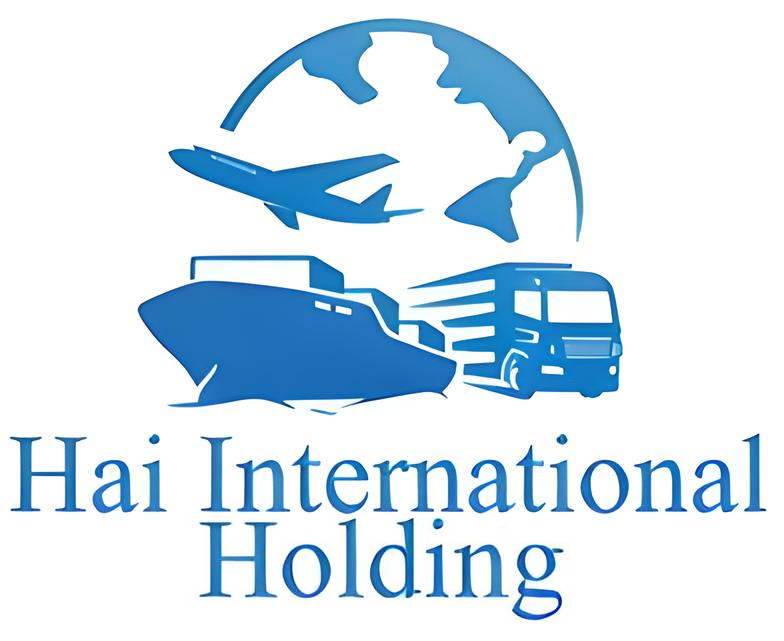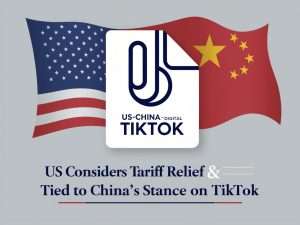“How Are Maritime Trade Routes Adapting to the Red Sea Crisis?”
The Red Sea, a pivotal maritime passage, has recently been thrust into the spotlight due to escalating attacks by the Yemeni Houthi militant group. These incidents have not only heightened safety concerns but have also significantly disrupted the global shipping landscape. As the world’s largest freight companies are compelled to reroute their vessels, a pressing question arises: what alternative shipping solutions can maintain the flow of trade in such turbulent times?
Context: Attacks on Ships in the Red Sea
Mounting attacks in the Red Sea, predominantly orchestrated by the Iran-aligned Yemeni Houthi group, are severely impacting maritime trade. These assaults have sparked significant safety concerns for sailors and have led to the rerouting of commercial vessels, highlighting the vulnerability of this crucial maritime corridor.
Source 1 : Red Sea attacks force rerouting of vessels, disrupting supply chains
Source 2 : Red Sea attacks on ships spark safety concerns for sailors
Impact on Global Shipping: Delays and Increased Costs
The Red Sea is an essential conduit for international trade, particularly for routes passing through the Suez Canal. The ongoing attacks have prompted major shipping companies, including MSC, the world’s biggest container shipping line, to avoid this region, thereby causing considerable disruptions in supply chains. This strategic shift is not just a matter of rerouting but also entails longer transit times and escalating costs, affecting global trade dynamics.
Source 3 : Shipping firms to avoid Suez Canal as Red Sea attacks increase
Source 4 : How Houthi attacks in the Red Sea impact shipping in the Suez Canal
Objective: Exploring Alternative Shipping Solutions
In response to these challenges, there is an urgent need for robust and flexible shipping alternatives. The situation demands innovative solutions that can ensure the safe and efficient transportation of goods, minimizing the impact on global supply chains. This calls for a strategic pivot to alternate modes of transportation, including rail and air freight, and emphasizes the crucial role of experienced freight forwarders like HAI International Holding. They play a pivotal role in navigating these complex challenges, offering customized solutions that adapt swiftly to the evolving geopolitical landscape.
In the following sections, we will delve into specific alternative shipping solutions that can help mitigate the impact of these maritime disruptions. These solutions aim to provide practical, effective ways to maintain the continuity and security of global trade in light of the challenges posed by the current situation in the Red Sea.
Solution 1: Rail Freight as an Alternative to Red Sea Shipping
Benefits of Rail Freight in Crisis Situations
“Can Rail Freight Mitigate Red Sea Shipping Disruptions?”
In the context of the Red Sea shipping crisis, rail freight stands out as a resilient alternative. It offers key advantages such as reliability and cost-effectiveness, crucial in times of maritime instability. Rail networks, less impacted by geopolitical tensions, provide a stable shipping option, ensuring uninterrupted trade flow.
Rail vs Sea and Air Freight: A Comparative Analysis
Comparing rail freight to other modes highlights its strategic value. With average transit times of 2-3 weeks, it’s a viable middle path between the swiftness of air freight and the sluggish pace of sea routes. Cost-wise, rail freight is significantly more economical than air transport, making it an attractive option for businesses seeking to balance speed and budget during the Red Sea shipping crisis.
Expanding Rail Infrastructure and Partnerships
Amidst the Red Sea disruptions, expanding rail infrastructure and developing strategic rail partnerships are crucial. Enhancing rail capabilities and aligning with key operators helps shippers diversify and secure their logistics. This expansion not only increases the rail network’s cargo capacity but also strengthens its resilience against future disruptions, ensuring reliable trade routes beyond the troubled Red Sea waters.
By leveraging rail freight, businesses can effectively circumvent the challenges posed by the current Red Sea situation. This mode of transport, with its unique blend of reliability, speed, and cost-effectiveness, emerges as a compelling alternative in the face of maritime uncertainties.
Solution 2: Air Freight – A Swift Response to Red Sea Shipping Delays
Rising Demand for Air Freight from Asia to Europe
“How is Air Freight Bridging the Gap in the Red Sea Shipping Crisis?”
Amidst the ongoing Red Sea shipping crisis, air freight has seen a remarkable upsurge in demand, particularly for routes from Asia to Europe. This surge is primarily driven by the urgent need to bypass maritime disruptions. Companies are increasingly turning to air freight as a reliable alternative to ensure timely delivery of goods, emphasizing its role as a critical link in the global supply chain during times of uncertainty.
Advantages of Air Freight: Speed and Security
The key strengths of air freight lie in its speed and security. In contrast to the prolonged transit times of sea freight, air freight offers significantly faster delivery, making it indispensable for time-sensitive shipments. Moreover, its inherent security, with less exposure to the risks associated with maritime routes, particularly in conflict zones like the Red Sea, adds an extra layer of assurance for shippers.
Utilization of Belly Cargo Space on Passenger Flights
An innovative strategy adopted by the shipping industry is the utilization of belly cargo space on passenger flights. This approach not only maximizes the available capacity but also provides additional flexibility to circumvent the challenges posed by the Red Sea situation. By leveraging these underutilized spaces, shippers can efficiently manage urgent shipments, ensuring a continuous flow of goods despite the maritime disruptions.
In conclusion, air freight emerges as a vital alternative for businesses impacted by the Red Sea shipping crisis. Its ability to provide rapid, secure transportation makes it a go-to option for urgent shipments, offering a beacon of reliability in the midst of global shipping challenges.
Solution 3: Strategic Partnerships with Freight Forwarders During Crisis
The Crucial Role of Freight Forwarders in Crisis Situations
“How Can Freight Forwarders Navigate Shipping Challenges in the Red Sea?”
In times of crisis, such as the ongoing Red Sea shipping disruptions, the role of freight forwarders becomes more critical than ever. They act as strategic partners, navigating complex logistics challenges and offering innovative solutions. Freight forwarders possess the expertise and resources to adapt quickly to changing circumstances, playing a pivotal role in maintaining the flow of goods even in the most adverse situations.
HAI International Holding’s Network and Capabilities
HAI International Holding stands out as a prime example of a freight forwarder with extensive capabilities and a robust network. Leveraging their comprehensive understanding of various transportation modes and global logistics, they are uniquely positioned to offer effective alternatives in response to the Red Sea crisis. HAI International Holding’s network spans air, ocean, rail, and trucking, enabling them to reroute cargo through alternate channels seamlessly.
Customized Logistics Solutions and Flexibility
The strength of HAI International Holding lies in its ability to provide customized logistics solutions and unmatched flexibility. They tailor their services to meet the specific needs of each client, ensuring optimal routing and timely delivery of shipments. This flexibility is crucial in responding to unforeseen disruptions, allowing HAI International Holding to pivot seamlessly between different transportation modes, whether it’s shifting urgent shipments to air freight, diverting cargo to rail networks, or utilizing their warehouse capabilities to hold inventory until risks subside.
In conclusion, collaborating with experienced freight forwarders like HAI International Holding is essential for businesses looking to overcome the challenges posed by the Red Sea situation. Their expertise, network, and adaptability offer a safety net, ensuring that trade continues to flow smoothly even amidst the most challenging disruptions.
Case Studies: Success in Navigating Shipping Disruptions
Triumphs of Rerouted Shipments Amidst Red Sea Crisis
“How Have Companies Successfully Rerouted Shipments During the Red Sea Turmoil?”
In the face of the Red Sea crisis, several companies have emerged as success stories, showcasing their ability to reroute shipments efficiently. These examples not only demonstrate resilience but also highlight the strategic adaptability required in modern logistics. By swiftly changing their shipping routes and modes, these companies have managed to maintain timely deliveries, minimizing the impact of the crisis on their supply chains.
Real-World Examples: Adapting to Disruptions
Real-world examples abound of businesses that have adeptly navigated the Red Sea disruptions. For instance, a leading electronics manufacturer, facing imminent delays due to Red Sea risks, partnered with a freight forwarder to shift their shipment from sea to air freight. This move not only ensured the security of their high-value cargo but also drastically reduced the transit time, enabling them to meet their tight delivery schedules.
Another example involves a global apparel brand. When confronted with the Red Sea crisis, they collaborated with their logistics partner to reroute their shipments through an expanded rail network, connecting China to Europe. This strategic shift not only bypassed the maritime risks but also provided a cost-effective alternative to air freight, demonstrating the value of flexible, multimodal transportation strategies in crisis situations.
These case studies underscore the importance of quick thinking and strategic planning in logistics. They serve as a testament to the effectiveness of alternative shipping routes and methods, particularly in unpredictable and challenging scenarios like the Red Sea crisis.
Industry Perspectives: Expert Insights on Red Sea Shipping Crisis
Expert Opinions on Current Shipping Challenges
“What Are the Implications of the Red Sea Shipping Crisis?”
The Red Sea shipping crisis, spurred by the Yemeni Houthi rebels’ attacks, has drawn significant concern from global trade and security experts. The Red Sea region, a crucial waterway bounded by strategic points like the Suez Canal and Bab al-Mandab Strait, is now a hotspot for conflict and military entanglement. These developments pose a severe threat to crucial trade routes, with potential disruptions to European interests and global trade strategies.
The situation has forced major shipping companies, such as AP Moller-Maersk and Hapag-Lloyd, to pause shipments through the Red Sea. This decision reflects the industry’s growing concern over the security situation, which has escalated with recent missile and drone attacks on commercial vessels. Such actions represent a significant risk to the safety and security of seafarers, underscoring the gravity of the situation.
Source 5 : Threats and Challenges to Trade in the Red Sea: Should Europe Be Concerned?
Predictions for Future Shipping Trends
The ongoing crisis, a result of geopolitical tensions, notably Israel’s conflict with Gaza, has led to attacks on at least eight ships in the Bab el-Mandeb Strait. This strait is a vital route for international trade, and disruptions here have far-reaching global implications. Experts highlight that 10 percent of the world’s seaborne crude flows through this region, making any disruption a significant global concern.
Furthermore, the Houthi rebels’ targeting strategy, aimed at vessels associated with Israel or its allies, indicates a broader geopolitical motive. This tactic raises the stakes for major powers, complicating the security landscape in the Red Sea. The persistence of these attacks and the rebels’ control over significant parts of Yemen since 2014 signal a long-term challenge for regional and international maritime traffic.
According to Paul Sullivan, a senior fellow at the Atlantic Council’s Global Energy Center, the ongoing crisis could lead to increased oil prices, especially if the Bab el-Mandeb Strait is constrained to oil traffic. This situation could reconfigure many cargo contracts, including those for oil and liquefied natural gas (LNG), leading to upward pressures on prices. The complexity of the crisis suggests that a wide range of outcomes is possible, depending on the evolving geopolitical dynamics.
In summary, the Red Sea shipping crisis poses significant challenges to global trade, with the potential to disrupt key maritime routes and impact global markets. The insights from industry experts underscore the need for heightened security measures, diversified shipping strategies, and a deeper understanding of the geopolitical undercurrents driving these disruptions.
Source 6 : Will oil prices rise after Red Sea shipping curbs amid Houthi attacks?
Conclusion: Navigating the Future with HAI International Holding
Recap of Solutions Offered by HAI International Holding
“How Can HAI International Holding Guide You Through Maritime Uncertainties?”
In response to the Red Sea crisis, HAI International Holding has showcased its capability to provide versatile and efficient shipping solutions. From pivoting to rail freight for stable overland connections to leveraging the speed and security of air freight, HAI International Holding adapts to the dynamic shipping environment. Their collaboration with an extensive network of freight forwarders further enhances their ability to reroute shipments, ensuring flexibility and reliability in crisis situations.
Call to Action for Potential Clients
If you’re navigating the complexities of modern global shipping, especially in light of the Red Sea disruptions, partnering with HAI International Holding is your strategic move towards stability and efficiency. Contact HAI International Holding today to explore tailored shipping solutions that fit your unique needs.
FAQs: Addressing Common Concerns and Queries
How can HAI International Holding ensure the timely delivery of goods amidst the Red Sea crisis?
HAI International Holding leverages a combination of rail, air, and strategic partnerships to offer alternative routes and modes, minimizing delays.
What makes rail freight a viable alternative during maritime disruptions?
Rail freight offers a balance between cost and speed, with stable overland routes that bypass maritime risks.
Is air freight a sustainable solution given its higher costs?
While more expensive, air freight's speed and security make it ideal for urgent or high-value shipments.
How does collaboration with freight forwarders benefit clients?
Freight forwarders provide flexibility and expert insights, enabling quick adaptation to changing shipping scenarios.
Can HAI International Holding handle large-scale shipping needs during crises?
Yes, their expansive network and multimodal capabilities allow them to manage large-scale logistics efficiently.











